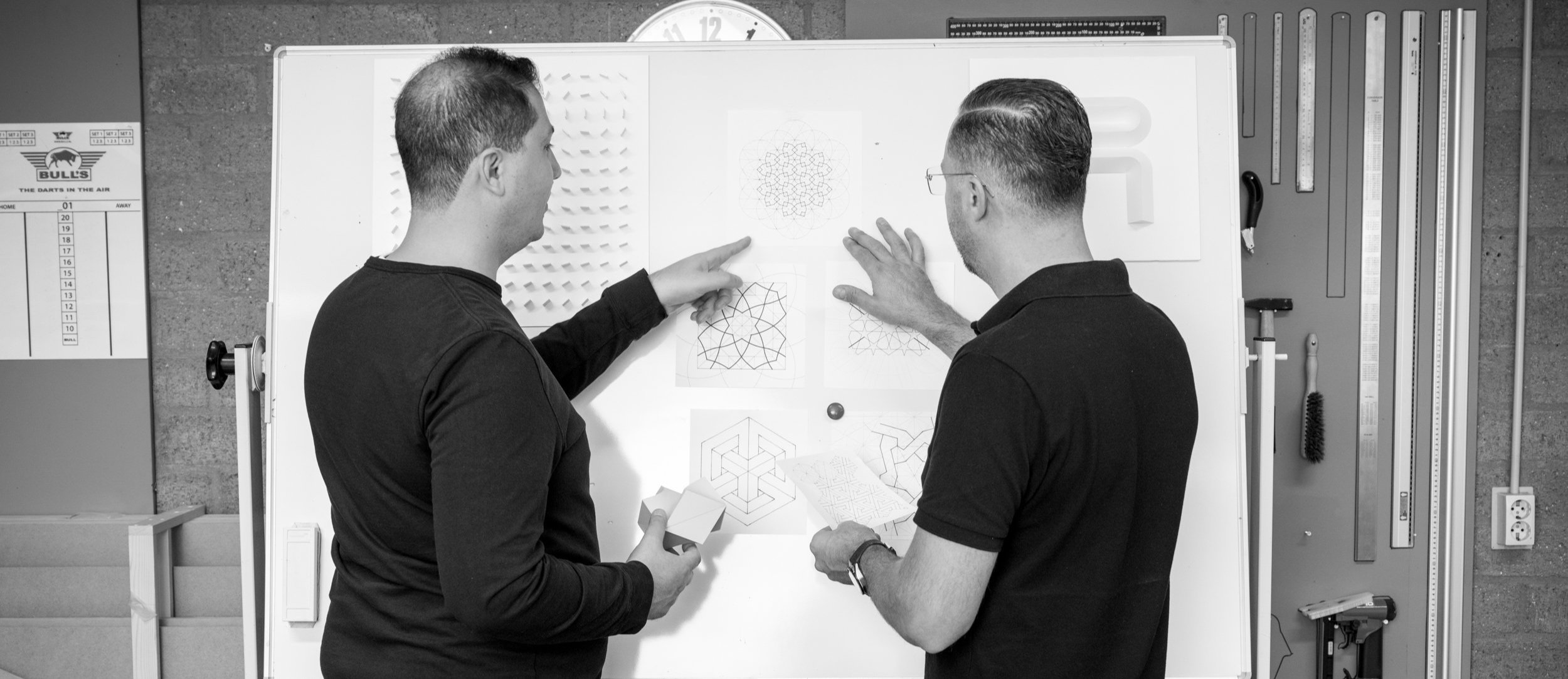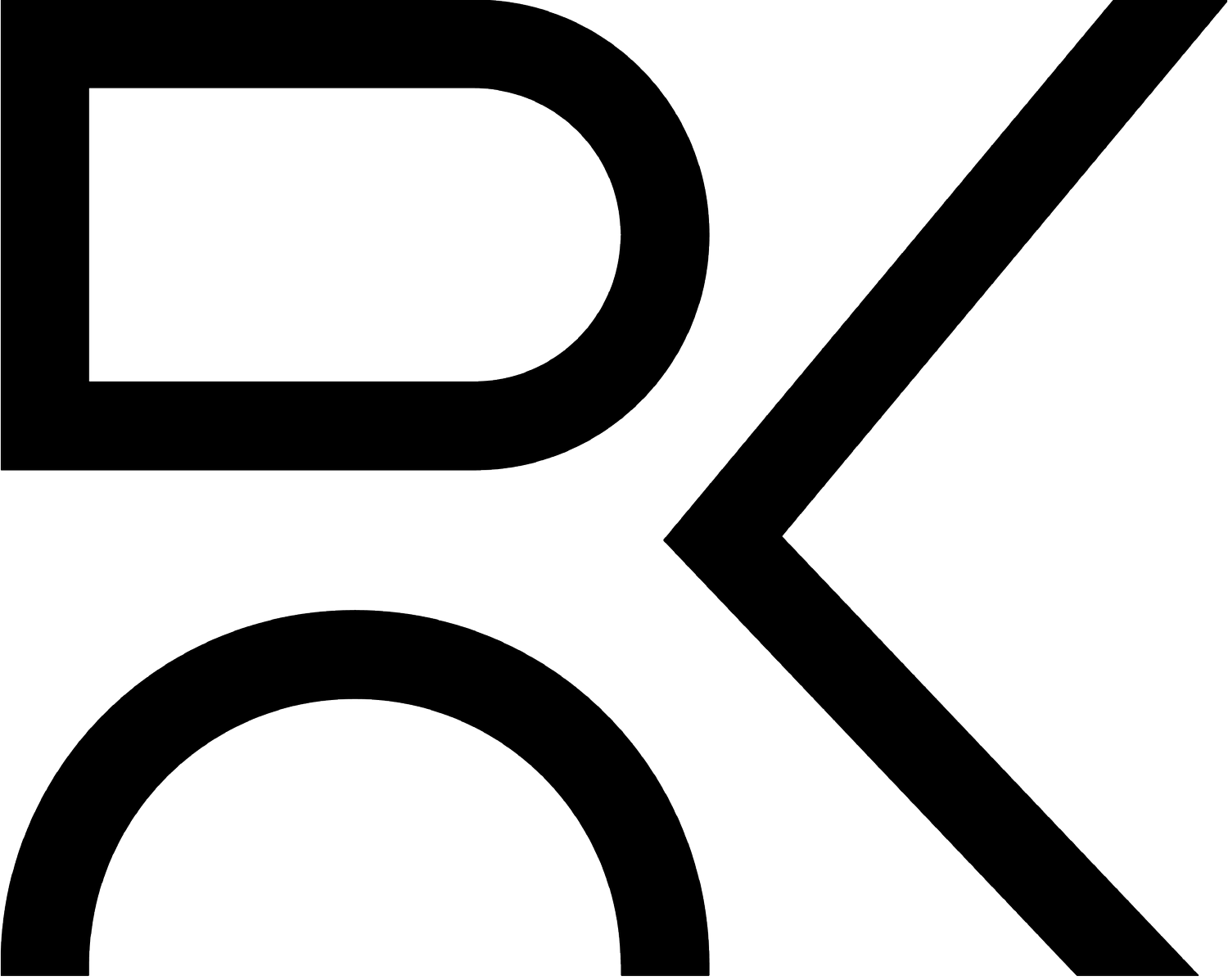
About us
Khalid Zerrou
Khalid has a diverse background in mechanical engineering & photography.The background in mechanical engineering introduced him to drawing and designing in 2D and 3D. He taught himself the craft of working with different types of paper resulting in extraordinary results. This combination gives him the unique perspective on how different shapes from ordinary items can be transformed into art using paper. Inspiration is based on Moroccan and Islamic geometry found on mosaic tile art. The aspect of nature in the form of plants, water and wind also play a fundamental role in the inspirational process.
Ever since getting introduced to paperart he has been working endlessly on different works.
Rachid Zerrou
Rachid quickly joined Khalid after seeing the results of his labour. Rachid also has a background in photography, and is experienced with 3D-printing as a result of his technical education. Both skills gave Rachid a headstart into self-learning the craft of paperart. He is continuously testing with new types of materials, improved technology of cutting paper and ways to improve the flexibility of the paper safeguarding the strength.
The results of his trials can be found in several unique works.
"The Molds of Infinity.
The brothers' choice of executing one work and not all the others is tough. Because numerous possibilities are visible for each mold and arrangement. Computer simulations make the choice decidedly easier. That is their domain, the seemingly infinite number of choices, and then determining each time the size, quantity of elements, color, and pattern. And one influences the other. In terms of color, their work is often subdued, almost somber, or in black and white, or sometimes in bright fluorescent colors. There are entrancing circles, undulating squares, and expanding works. And I suspect that young people under the influence might recognize the three-dimensional experience with such patterns. And the pleasant sensation of depth in perceiving the spiraling rotations and the perfection in waves ebbing and flowing. Thus, it is the connection between geometry and that infinity, those two unequal entities, that the Moroccan Dutch Zerrou brothers combine in their paper works.
Once Khalid Zerrou (Leiden, 1978) began folding a sunflower in paper. The black seed inside the yellow petals grows in a pattern of upright points, spiraling outward. The young boy saw a tight geometric pattern in the black seed and, at the same time, a progression from large to small, suggesting infinity. The yellow paper petals never materialized. Rachid Zerrou (Leiden, 1982) understood his brother's interest, and since then, the brothers have not ceased their research into the connection between geometry and infinity.
Geometry is geometry. A branch of mathematics that deals with the measurement, proportion, and properties of points, lines, curves, angles, planes, and spatial figures.
Infinity in geometry. In a geometric context, however, a different intuition of infinity arises as "very far away."
The brothers now use state-of-the-art computer simulations and architectural drawing programs, as well as 3D printers, in their research. They investigate how certain geometric shapes, arranged in groups or patterns, evoke three-dimensional forms, creating a timeless and infinite feeling. Khalid and Rachid Zerrou ultimately bring their works to life in paper. In paper! Paper is rigid, colored, and perhaps thick, but it is impeccably clean and meticulously processed. It is carefully cut, incised, folded, and glued until it forms a single element, creating a tight and sturdy little sculpture. A miniature sculpture. A basic form. A mold at times. That basic form or mold is either repeated or distorted in patterns, rotated, enlarged or reduced, mirrored, or similarly repeated in curves or folds. This creates movement and the sense of infinity. In essence, the works are solutions to a non-existent or, rather, self-created problem. Everything is aesthetic, executed super precisely, and hermetically presented in black or white box frames.Boxes full of joy.
The starting point; geometric patterns in three dimensions is - I suspect - somewhat 'new' in contemporary Western art, but at the same time, in the North African tradition of decorative plasterwork and glazed tiles, it is nothing new. An uncle in Morocco was actually a celebrated craftsman in such glazed tilework. The work of the Zerrou brothers also has roots in the Op-art of the 1960s, with Vasarely clearly as inspiration. And, of course, they are familiar with the work of M.C. Escher and the golden ratio and the Fibonacci sequence. But even more, their inspiration can be found in the Alhambra. A medieval palace city within a fortress atop a large rock formation. A palace city within a fortress with thirty gates, overlooking the city of Granada from a height of 400 meters. The buildings are the majestic residences of the Moorish rulers from roughly 700 to 1500 AD.Together, the structures formed the Moorish/Islamic response to medieval Gothic architecture. Graphic artist M.C. Escher made an important discovery there concerning regular tiling patterns.The same regular tiling pattern is also used by the Zerrou brothers, and in their perfectionism of execution, a certain detachment, a kind of coolness, emerges.But it is a refreshing coolness.Calm, refreshing coolness.It is tranquility in motion.And expressed in crystal clear terms.Undoubtedly.The work exudes tremendous control.It delivers what it promises in the suggestion of movement.No rigidity, despite the strict forms.Stiff. Solid. Flawless.This gives it a mechanical quality. Not negative in any way.It is a result of the pursuit of perfection.As a result, the work appears almost like a product.Immaculate and new.Too good to be true...But it is of our time. Now!And young people do indeed respond positively to the work.Op-art and Vasarely and Jesus Rafael de Soto are 'in.'And the serious use of Islamic roots and their parents' Morocco represents an important opening and reevaluation.Reverse appropriation?Perfectionism might be a pitfall, but not irreversibly.And the potential of the work, realized thus far, is significant.Hooray!I envisionlarge works.Overwhelming.Perhaps someday even a bridge formed of tetrahedrons.
Allart Lakke





